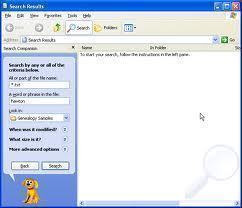How to Fix Windows Search
Windows Search (Windows Instant) is a program in the Windows Operating System that allows users to search for specific files, folders, or other remnants of data on one or more hard drives or some other storage device. It allows users to search for customized keywords, specify storage locations, browse for files, and toggle through a multitude of functions. Windows Search is very easy to use, can find virtually any type of file on the user’s hard drive (including emails and data files), and supports natural language, allowing users to enter searches like “vacation pictures” rather than the specific file name.
How Windows Search Works
Windows Search can be found on the Start Menu of Windows Vista and Windows 7, with a Search Explorer in Windows XP and earlier versions. Both programs work by indexing every folder on the user’s hard drives and attempting to make a match between the user’s keywords and file names. While this requires the program to index every file, it does not have to access the file in order to read its file name. This allows the program to index files very quickly and display each one in the Search interface if a match is made.
How to Fix Windows Search
Although Windows Search is a very efficient and effective search tool, it lacks the ability to see every file type in existence, unless the user specifies that file type. Users can do this by typing in “Regedit.exe” in the “Run…” tool that is also found on the Windows Start Menu. The user must then go to the HKEY_CLASSES_ROOT.**** key, where the asterisks represent the file type the user wishes to add to the search filter. This key should contain a subkey called PersistentHandler. If it does not, create one. The user should then click on the subkey’s Default value and type in 5e941d80-bf96-11cd-b579-08002b30bfeb. The user can then repeat these steps for any other file types that he/she would like to have displayed in search results.
Advantages
Windows Search has many significant advantages over Search Explorer and similar programs. It displays search results directly within the computer’s Start Menu. Windows Search also allows the user to save search results in an XML file. It can also run in the computer’s background with low priority and allows other processes to take advantage of system resources when needed. This allows searches to be performed without interrupting other activities or slowing down the computer.


Comments - No Responses to “How to Fix Windows Search”
Sorry but comments are closed at this time.